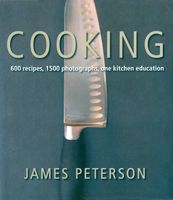How to Thicken a Sauce
Published 2007
Until the 1970s, cooks insisted that a sauce be thick enough to coat and stay on top of a piece of meat or fish. In medieval times in Europe, toasted bread and egg yolks were used for thickening. In the sixteenth century, roux—flour cooked usually with butter—was discovered and replaced the bread. In the 1970s, cream, butter, egg yolks, and vegetable purees replaced the flour. But the 1970s also brought another big change: cooks realized that a sauce could be served around or under a food—usually in a soup plate—which eliminated the need for any thickener. Instead of using an enormous amount of reduced cream, butter, or egg yolks, cooks found they needed only enough fat to bring together the flavors of a sauce. This enabled them to make extremely savory sauces without flour or any extra fat.
Become a Premium Member to access this page
Unlimited, ad-free access to hundreds of the world’s best cookbooks
Over 160,000 recipes with thousands more added every month
Recommended by leading chefs and food writers
Powerful search filters to match your tastes
Create collections and add reviews or private notes to any recipe
Swipe to browse each cookbook from cover-to-cover
Manage your subscription via the My Membership page
Part of
Advertisement
Advertisement


